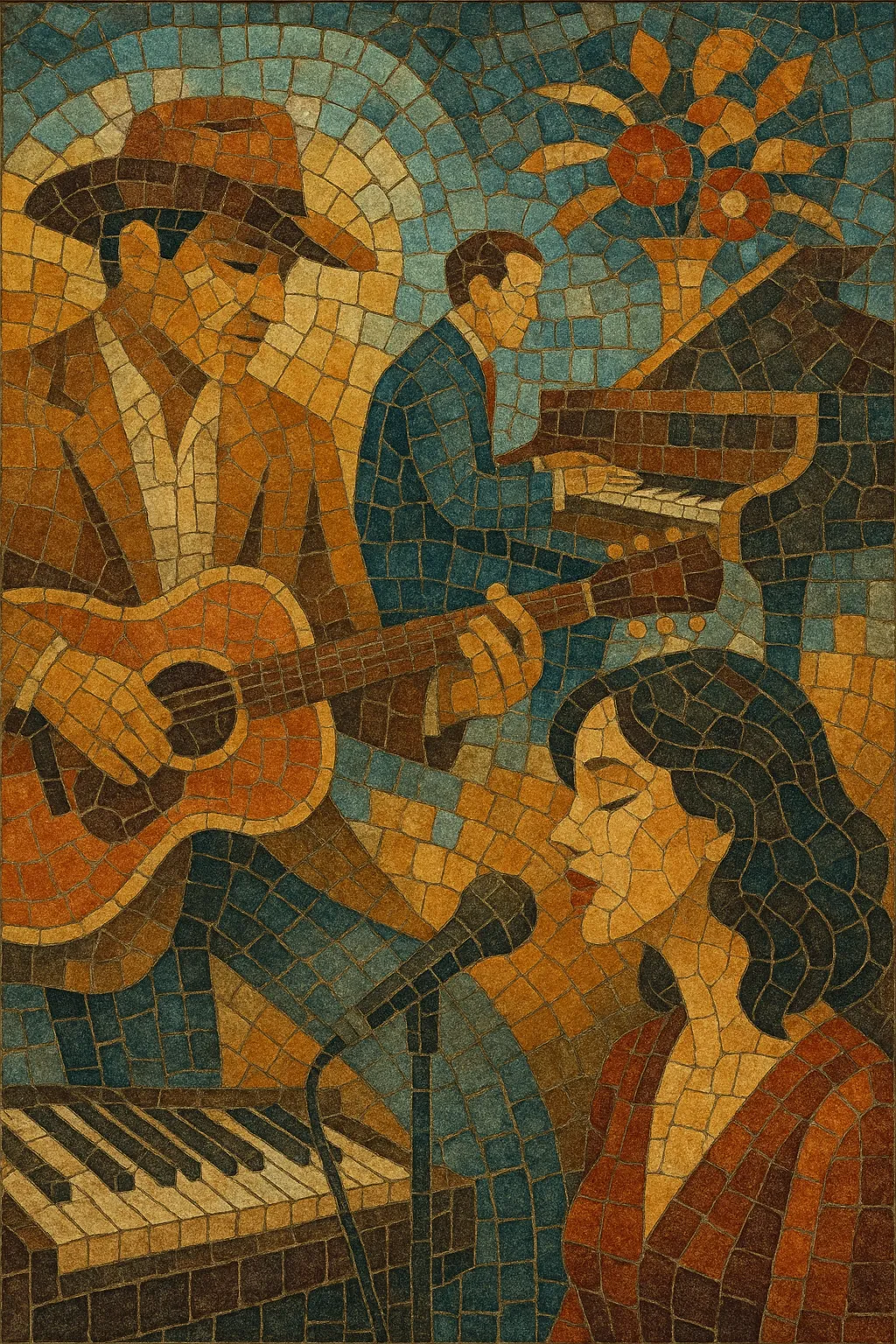
The Nashville Sound is a smooth, pop-leaning style of country music that emerged in the late 1950s out of Nashville’s recording studios. It softened honky-tonk edges with orchestral strings, background vocal choirs, and polished production to appeal to both country and mainstream pop audiences.
Instead of the fiddle-and-steel-forward bar-band feel, the style favors crooning lead vocals, "slip-note" piano, tic-tac bass, subdued drums with brushes, and tasteful electric guitar. Lyrically, it centers on love, longing, and adult romance, packaged in concise, radio-ready song forms that crossed over to the pop charts.
In the wake of rock & roll’s chart dominance, Nashville producers sought a way to revive country’s commercial fortunes. At RCA and Decca’s Nashville studios, figures like Chet Atkins and Owen Bradley developed a sleeker approach that deemphasized honky-tonk grit. They replaced fiddles and loud steel breaks with strings, backing vocal groups (e.g., the Anita Kerr Singers, the Jordanaires), and carefully arranged rhythm sections.
Hallmarks included mellow, crooning vocals; Floyd Cramer’s influential "slip‑note" piano; tic‑tac bass (upright plus muted baritone/electric doubling); brushed snare; and restrained, clean-toned guitar. Songs often used pop ballad structures (AABA or verse–chorus) and adult, sentimental themes. Artists such as Patsy Cline, Jim Reeves, Eddy Arnold, and Don Gibson scored major crossover hits, bringing country to mainstream pop audiences without abandoning its storytelling core.
The Nashville A‑Team of session musicians standardized the feel, efficiency, and sound. Producers Owen Bradley (Decca) and Chet Atkins (RCA) shaped arrangements, while engineers and arrangers integrated string sections and vocal choirs into country records with a pop sheen.
By the late 1960s, the Nashville Sound evolved toward countrypolitan and later influenced the Urban Cowboy era’s polished radio country. Its commercialism also spurred a counter‑movement—Outlaw Country—whose artists rejected strict studio control. Decades later, contemporary country and neo‑traditionalists still react to or borrow from its crossover craft, arranging polish, and song form discipline.

